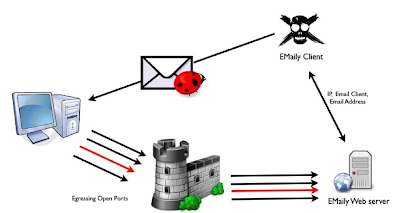since the original conceptualization of computer security, and perhaps even before, social engineering has been in existence. One could say that social engineering began when societies began, whether it was realized or not. It is now time to give some of this work to scripts and applications to make it a little more interesting…
As the years passed in the computer security community, network penetration became more and more necessary, but computers were not the only thing getting compromised. Social engineering was part of the hacker subculture, but it was never a service offered by companies.
In recent years—largely due to the fact that they are doing more business online—companies have become more security aware and networks have become more “secure.” Finding remote vulnerabilities on Internet-facing networks that can be exploited is becoming more and more difficult due, in part, to such realities as the increased safety of operating systems, the standardization of automated patching, and the hiring of security personnel. Having said that, many would argue, “What about corporate networks? Do companies secure their networks the same way they secure production servers?”
The short answer, in my experience, is no. Companies have different approaches to and views about internal and external networks: they often don’t think about internal threats. They fail to understand that internal threats don’t necessarily mean an internal employee going rogue; it could easily be an attacker with access to the corporate network who is attacking it from an internal perspective.
For thousands of reasons and excuses, workstations and internal servers are never kept as secure as external servers: they usually lack up-to-date patching schedules, and are loosely and improperly configured. On top of this already insecure network are the human users, which includes IT admins, engineers, and developers. Your employees.
Employees: A group of people who can perform amazing tasks such as infect their computer in less than two hours, install buggy freeware apps, and open all those links that come with explicit warnings such as DO NOT OPEN – VIRUS FOUND.
To make a story short, hackers, spammers, botnets, criminal organizations, and all the other “bad guys” constantly take advantage of the weakest link in all types of security: The Human Factor, or human stupidity. The reality is, it doesn’t matter how much you harden a computer, you can rely on a human to find a way to compromise that computer.
Social engineers are acutely aware of how human psychology operates, and they are well aware of human needs and feelings. Consequently, they will use and abuse these “issues” to craft their ruses and attacks.
Additionally, due to the rise of social networks in personal and corporate environments, people are constantly checking their Facebook, LinkedIn, email, Twitter, Google+, and Gmail—everyone wants to know what is going on within their company. The 21st century human has an addictive need to be informed in real-time. It is human nature to communicate and interact with people, and to be as informed as you can about your environment. Deep down, we all love to gossip.
Before we even start, it’s worth noting that client-side attacks, phishing attacks, social engineering attacks, and social engineering penetration tests have existed for a long time. Due to the ever-tightening security around networking in recent years on one hand, and the expansion and rapid growth of social networks on the other, these attacks have gained strength, and new attack types are appearing daily, abusing the communication channels humans are working so hard to create.
Standard attack types:
• Classic email-driven social engineering attacks
• Website phishing attacks
• Targeted social hacking (Facebook, LinkedIn, Google+, et cetera)
• Physical social engineering
In my next three posts, I will be walking through the steps to perform a social engineering attack from a corporate point of view as a security consultant. I’ll begin with information gathering, the indispensible “homework phase” that every social engineering engagement should begin with.





